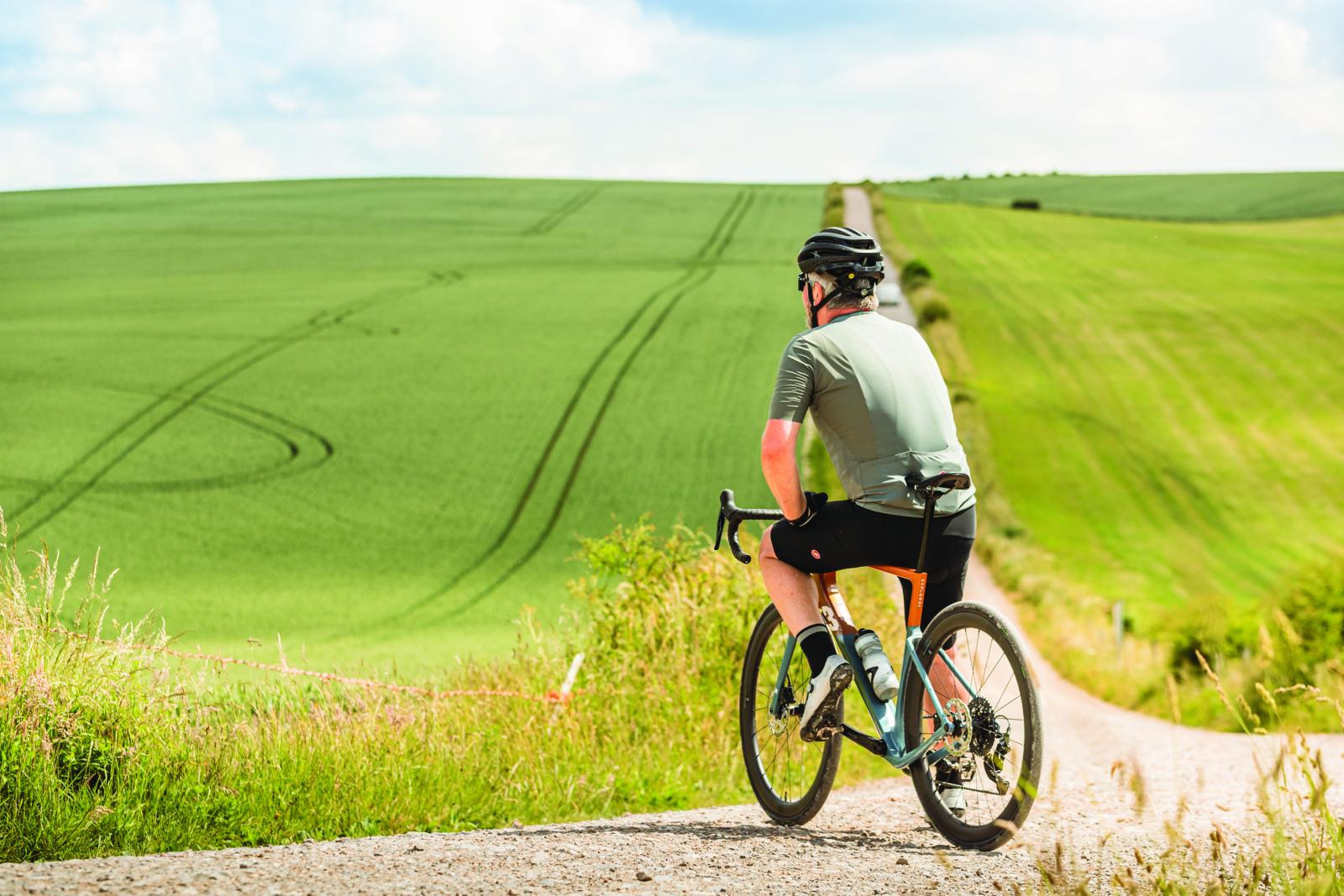When disc road brakes started to become prevalent, they seemed a logical fit for most road bikes, especially endurance ones. We questioned whether we’d see disc aero bikes, and even though it was assumed to be an inevitable development, years of increasing frame, wheel and brake integration seemed at odds with disc brakes.
Ridley isn’t the first to the aero disc party, but is an early adopter. The carbon frameset retains the Noah shape, with its F-Split air-channelling fork, twin grooves on the leading edge of the down tube to speed airflow, truncated aerofoil profile to the seat tube and seatpost, and heavily dropped seatstays with a slim frontal section.
The lower head-tube and down-tube junction is lowered to incorporate the fork crown, and together minimise the gap to the front wheel. The rear wheel is tucked in behind the cutaway seat-tube, and there’s an aero profiled top section to the handlebar.
This model has an Ultegra Di2 groupset, meaning two fewer cables to protrude, but its chunky derailleurs may even things out.
On flat or rolling terrain the Noah SL Disc is a purposeful ride and reacts well to inputs, gaining speed and holding on to it
Wheels are important to any bike with aero intentions, and Fulcrum’s Racing Quattro Carbon DBs are efficient and agile — deep enough for aerodynamic assistance, but not a hindrance in gusty winds.
We’ve found the rim-braked version good, but not outstanding, when braking in the wet, so the addition of disc brakes ensures consistently reliable stopping, and no rim wear. Fitted with 12mm thru-axles, the Fulcrums gain impressive lateral rigidity, and those brakes are perfectly aligned.
Ultegra Di2 comes with a weight penalty over its mechanical equivalent, but the relatively heavy complete weight (8.26kg) of my medium bike still surprises. Aero road framesets are often heavier than more conventional options, and even with good in-house 4ZA finishing kit, the SL Disc isn’t an ideal choice for lengthy climbs.
In terms of power transfer, it’s right up there, thanks to burly main tubes and chainstays, thru-axles and stiff rims. Continental’s Ultrasport 25mm rubber matches the Fulcrums’ width well, gripping predictably and rolling fast.
On flat or rolling terrain the Noah SL Disc is a purposeful ride and reacts well to inputs, gaining speed and holding on to it. Longer drags require far more effort to maintain speed, with the bike’s overall mass telling the longer a climb continues.
With 52/36 rings and an 11-28 cassette, the gearing is racy, but perfect for the bike’s intended use.
The Noah doesn’t have the supple ride of a top endurance bike, but sensible tyre volume and the dropped seatstays help limit abuse from Britain’s sketchiest tarmac.
The bike’s handling is surefooted. It gives away a little corner speed to more supple bikes, but is still quick between the bends, and you have the option of braking later too.
For now, amateurs can’t compete on road disc bikes, but what we have here is a fast, highly focused aero bike with brakes you can count on to always be there and that won’t ruin your rims.
It’s competitively priced, and as for the question of whether a disc machine is as aerodynamic, or more aerodynamic, I don’t have an answer. If you like it, and it suits your riding, I doubt you’ll notice the difference.
To stay current, this article has been updated since it was first published and so some comments below may be out of date.





